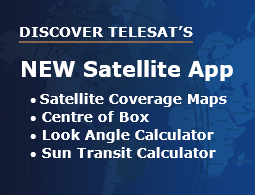Emerging technologies such as artificial intelligence (AI), machine learning (ML), predictive analytics, and the Industrial Internet of Things require significant processing power. On the other hand, they offer great rewards. Insights derived from these solutions can deliver benefits including competitive advantage, increased efficiencies, and improved health and safety for workers.
However, some industries and organizations struggle to take advantage of these Industry 4.0 technologies unless they’ve got powerful on-site data centers for computing and processing. That’s not always the case in remote locations — for example, oil rigs, mining operations, far-flung factories, and scientific outposts generating significant amounts of data.
The right combination of a private LTE/5G network with robust satellite connectivity can resolve this issue.
The networking path to Industry 4.0
It can be an expensive proposition to build out your own private LTE or 5G network. For example, installation and license fees for 5G can range from US$250,000 to $1.2 million, according to data from the U.S. government that was analyzed by Light Reading.
However, there are less costly options such as using the as-a-service model. Similar to the concept of renting or leasing, a telecom services company provides its network architecture to a customer on an as-needed basis and charges according to the capacity used. In the case of private LTE and 5G, the telecom provider would lease dedicated spectrum and infrastructure. Some telecoms can also help manage the network for you. These services can reduce the costs associated with a build-it-yourself private network and the need to find or repurpose in-house expertise to manage it.
Enterprises with remote locations that are using AI, ML, analytics, etc., will still need a reliable, high-performing, secure, and cost-effective way to backhaul that data traffic to and from the cloud or headquarters data center for data processing. That’s where satellite technology can make a significant difference. Enterprises can fill that gap where fibre connections don’t exist by backhauling traffic via Geostationary Equatorial Orbit (GEO) satellites.as well as next-generation, enterprise-class Low Earth Orbit (LEO) networks.
Satellite connectivity provides secure, robust data transfer — including to and from difficult-to-reach facilities. For example, Sencinet recently signed a five-year contract with Telesat to provide high-throughput satellite capacity to backhaul oilfield data traffic for Petrobras, a Brazilian oil and gas provider.
Organizations with difficult-to-reach operations can support their use of Industry 4.0-related technologies. A significant consideration in this strategy must include a plan for cost-effective, secure backhauling of data traffic for processing at the data center or in the cloud. This is possible today with Telesat GEO satellite connectivity – and future enterprise-class LEO networks like Telesat Lightspeed will provide improved, fibre-like latency with higher capacity data links.




